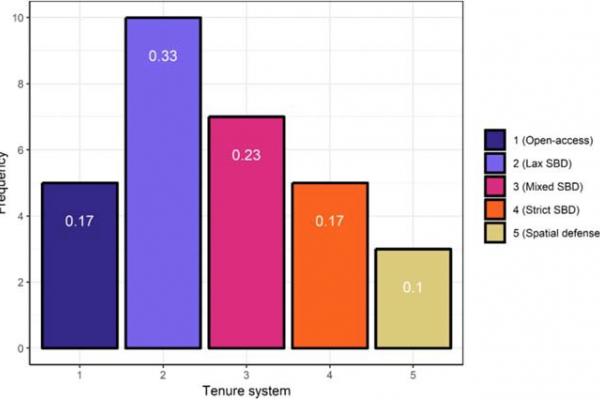Paper in Human Ecology

Our paper Comparative Study of Territoriality across Forager Societies just came out in Human Ecology.
Moritz, Mark, Shane Scaggs, Craig Shapiro, Sarah Hinkelman. 2020 Comparative Study of Territoriality across Forager Societies. Human Ecology 48(2):xx-xxx. 10.1007/s10745-020-00141-9.
The main take-aways of the paper are: (1) there is considerable diversity and complexity in property regimes within and across foraging societies; and (2) tenure systems are assemblages of multiple property regimes associated with the diversity of resources that foragers use.
The paper is the result of a collaborative research project that was part of a course on hunter-gatherers that aims to train students in the scientific study of the diversity of forager societies without recreating myths. The course is centered around Robert Kelly’s Lifeways of Hunter-Gatherers and John Marshall’s Kalahari Family. Kelly’ book shows how a scientific study of the wide range of foraging societies, not just the Hadza or the Ju/‘hoansi, helps to avoid the creation of myths about hunter-gatherers, while Marshall’s films show the devastating impacts of these myths on contemporary foragers. The project was inspired by Robert Kelly’s book “Lifeways of Hunter-Gatherers” which is all about the scientific study of the diversity of forager societies.
The goal of our project was to conduct a comparative study of tenure systems across a large number of forager societies using a macro-ecological approach. We ended up with 30 cases from across the world. We used ethnographic data from the eHRAF database (https://hraf.yale.edu) to determine the forms of territoriality in different societies and used Binford’s Frames of Reference for the independent variables. Unlike other papers that examine territoriality in forager societies, we used the ethnographic data from eHRAF to determine territoriality, rather than Binford’s resource ownership variable (OWNERS). And this shaped our results.
After multiple rounds of coding the “messy” ethnographic data for territoriality, we ended up with five (!) types of tenure systems: open access, three types of social boundary defense, and spatial boundary defense. Spatial boundary defense, the strictest form of territoriality was the least common in our sample, with only 3 cases (or 10%), whereas open access and lax social boundary defense comprised 15 cases (or 50%) in our sample. Social boundary defense in its different forms – lax, mixed, and strict – was the most common of the tenure systems with 22 cases (or almost 75%) in our sample. We tried to explain the variation in tenure systems in our sample in terms of resource density and predictability but were unsuccessful. But we did find that increasing population density, and presumably greater competition for resources, leads to greater territoriality.
We did not do this project alone. We got help from the following people. Amber Johnson for her advice on using the data from Binford’s Frames of Reference, which can be found at http://ajohnson.sites.truman.edu/data-and-program/. Carol Ember and Christiane Cunnar for helping with training students in cross-cultural research using the eHRAF database. And of course, all the students of ANTHROP 5620: Hunters and Gatherers in 2017, 2018, and 2019 who helped with data collection, data analysis, and interpretation of the results.
